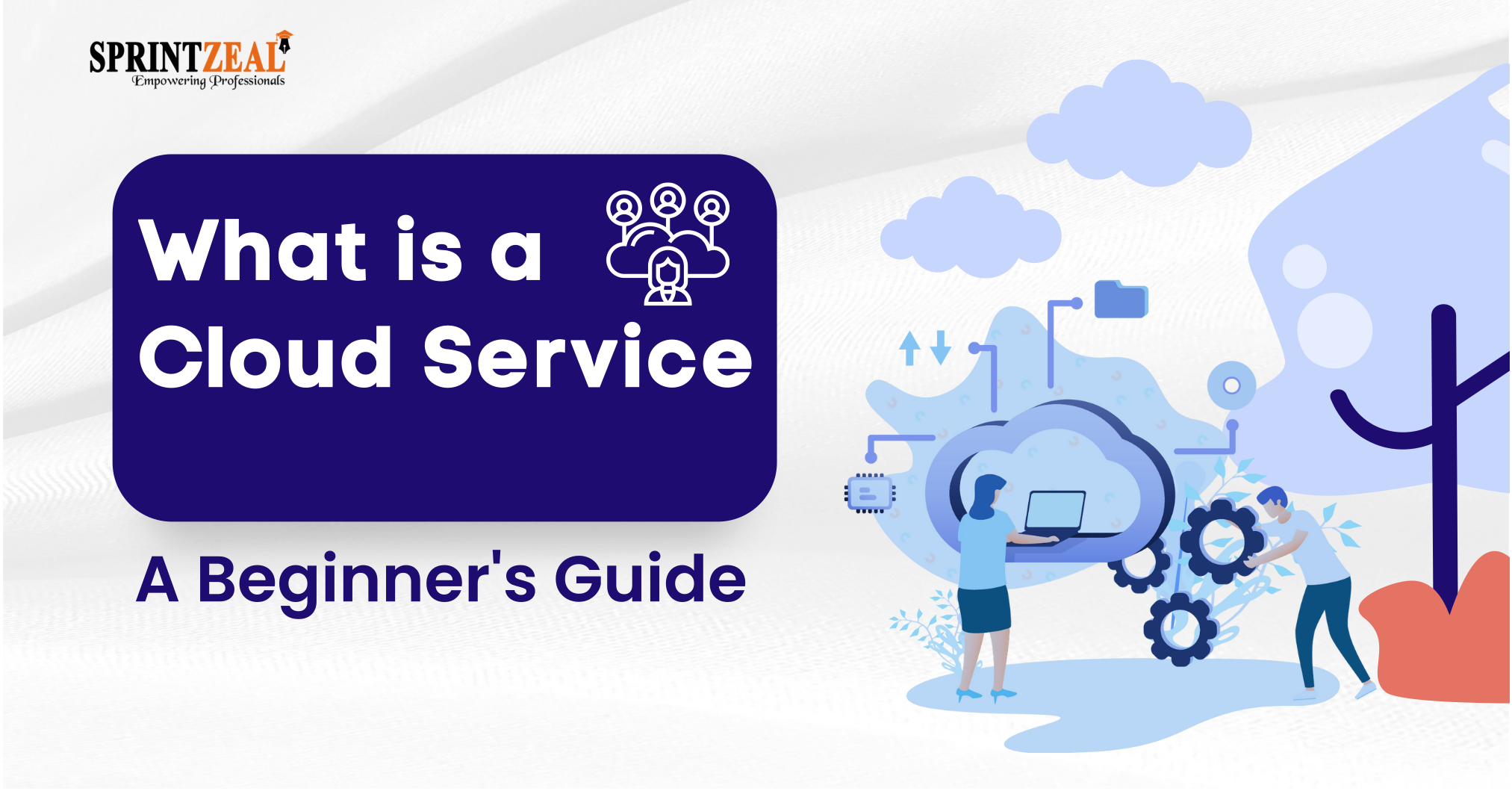Azure Architecture - Detailed Explanation
-
 By Sushmith
By Sushmith - Published on Oct 7 2024

Established in 2010, Microsoft Azure is now one of the highly preferred cloud service providers. Of the overall market of Cloud Services providers, Microsoft Azure’s contribution covered over 31% of the total market in 2020. Azure is highly recognized for its robust cloud environment, together with the flexibility and security it offers. IT infrastructure is now highly reliant on the cloud and it is very crucial to stay innovative and robust.
As you may already know that Microsoft values their customers and keeping this in mind, they worked on making this environment a secured and also by staying innovative, they connect. They created a wide range of services designed to help with diverse needs of the modern enterprises. In this article, we will learn more than just the origin of azure by covering, Key Components, Best Practices, and top tools. Now, back to the topic, what is Azure Architecture and who is an Azure Architecture?
Table of Contents
What is Azure Architecture?
Azure architecture refers to the structural design that maps Microsoft Azure’s cloud platform. It is the fundamental layer needed to build and operate any cloud-based solutions. One of the core reasons why Azure architecture is important in cloud computing is that its support for different deployment models – IaaS, PaaS, and SaaS. These models enable organizations to create a specific structure to their cloud and use based on specific business needs.
Azure’s architecture is designed with scalability and flexibility at its core, meaning businesses can easily adjust their cloud resources as they grow or shrink. The platform’s global network of Azure regions and availability zones ensures that applications and services remain available, even in the face of outages or high traffic demand.
Where is Azure Architecture Used?
Azure architecture is used across various industries, providing solutions that enhance operational efficiency, innovation, and security. Let’s look at some notable sectors:
- Finance: Many banks and financial institutions use Azure security architecture to ensure compliance with strict regulatory standards. With features like Azure multi-tenant architecture, they can securely store sensitive financial data while offering seamless digital banking services.
- Healthcare: Azure’s HIPAA-compliant architecture supports healthcare providers in handling patient data securely. With the rise of telemedicine, the platform’s Azure IoT Edge architecture plays a key role in managing connected medical devices.
- Manufacturing: Companies in the manufacturing sector leverage Azure for solutions like Azure data analytics architecture to optimize their production processes, forecast trends, and improve quality control.
- Retail: Retailers use Azure data platform architecture to manage customer data, personalize shopping experiences, and streamline supply chains with tools like Azure Kubernetes architecture for handling large-scale containerized applications.
Key Components of Azure Architecture
Azure’s architecture is made up of several critical components, each serving specific purposes:
- Azure Regions and Availability Zones: These are the building blocks of high availability and disaster recovery. By spreading workloads across different regions and zones, organizations can avoid single points of failure.
- Virtual Networks (VNet): VNets provide secure networking in Azure, allowing organizations to create isolated networks for different applications. Combined with tools like Azure ExpressRoute architecture, businesses can create private connections between their on-premises infrastructure aand Azure.
- Azure Resource Manager (ARM): ARM is the interface for managing and organizing Azure resources. With ARM templates, architects can deploy, update, and manage resources consistently.
- Compute Services: Azure offers a variety of compute options, including Virtual Machines (VMs), Azure Kubernetes Service (AKS), and Azure serverless architecture for scalable, cost-effective processing power.
- Storage Solutions: Azure provides flexible storage options, including Azure Blob Storage for unstructured data, Azure Disk Storage, and Azure File Storage for file-sharing needs.
- Azure Databases: With offerings like Azure SQL Database and Cosmos DB, Azure’s database services cater to a wide range of needs, from relational to NoSQL databases, supporting both OLTP and OLAP workloads.
Features of Microsoft Azure Architecture
Azure architecture is designed to offer flexibility and a broad range of features:
- Compute Services: Whether you need VMs, Azure App Services, or serverless computing, Azure has a compute option for every scenario.
- Networking Features: Azure supports advanced networking tools like VPN gateways and ExpressRoute to build secure, reliable connections between different environments.
- Storage Features: From Blob Storage for unstructured data to Azure Data Lake for analytics, Azure's storage services cater to various use cases.
- Security and Identity: With tools like Azure Active Directory and encryption services, Azure ensures that security is embedded at every layer of your architecture. Zero Trust principles can also be enforced through Azure Zero Trust Network Architecture.
- Development and Integration Features: Azure supports the seamless integration of development and deployment pipelines through services like Azure DevOps and Azure Integration Services Architecture, making it easier to roll out updates and new features.
Best Practices for Azure Architects
Building a robust and scalable architecture requires following certain best practices:
- Designing for Scalability: Azure architects should design systems that can scale easily, whether vertically or horizontally. Leveraging Azure landing zone architecture helps in setting up scalable environments from the get-go.
- Security Considerations: Integrating security best practices early in the design phase is crucial. Features like Azure Security Architecture ensure data protection through encryption, identity management, and access control policies.
- Cost Management: While Azure offers many services, architects must ensure cost-efficiency by regularly monitoring and optimizing resource usage. Tools like Azure Cost Management can help track and control expenditures.
Essential Tools for Azure Architects
To effectively manage Azure environments, professionals need the right tools:
- Azure Monitor: A vital tool for observing application performance and infrastructure health.
- Azure DevOps: This tool supports Continuous Integration and Continuous Delivery (CI/CD) processes, streamlining the development lifecycle.
- Azure Cost Management: Architects can leverage this tool to track spending and optimize resource allocation for better cost efficiency.
- Azure Resource Manager (ARM) Templates: ARM templates enable architects to automate resource deployment, ensuring consistency across environments.
- Third-Party Tools: Tools like Terraform, CloudHealth, and Grafana enhance Azure's native capabilities, helping architects manage complex environments and optimize performance.
Conclusion
Microsoft Azure architecture is a powerful and versatile framework that allows businesses to scale, innovate, and secure their IT environments. With its robust features and comprehensive tools, Azure provides everything needed to run modern, scalable applications.
For those looking to deepen their understanding of Azure architecture framework or to become a Microsoft Certified Azure Solutions Architect, Sprintzeal offers extensive training courses that can guide you through the essentials and beyond.
Whether you’re interested in Azure data warehouse reference architecture, IoT Azure architecture, or managing SAP on Azure architecture, our courses provide valuable insights and hands-on experience.
Explore Azure’s potential today and take your cloud expertise to the next level!
Subscribe to our Newsletters
Popular Programs
Microsoft Azure Administrator Associate AZ-104
Live Virtual Training
- 4.5 (560 + Ratings)
- 67k + Learners
AWS Certified Solution Architect Professional
Live Virtual Training
- 4.4 (300 + Ratings)
- 50k + Learners
AWS Certified DevOps Engineer Certification Training
Live Virtual Training
- 4.2 (400 + Ratings)
- 12k + Learners
Microsoft Azure Infrastructure Solutions (AZ-305)
Live Virtual Training
- 4.4 (560 + Ratings)
- 59k + Learners
Trending Posts
Trends Shaping the Future of Cloud Computing
Last updated on Jun 4 2024
AWS Interview Questions and Answers 2024
Last updated on Sep 19 2023
Most Popular Applications of Cloud Computing – Some Will Shock You
Last updated on Oct 9 2024
Continuous Deployment Explained
Last updated on Jul 14 2023
What Is Edge Computing? Types, Applications, and the Future
Last updated on Dec 6 2024
What is a Cloud Service - A Beginner's Guide
Last updated on Apr 18 2023
Categories
- Agile Management 54
- AI and Machine Learning 42
- Big Data 53
- Business Management 51
- Cloud Computing 44
- Digital Marketing 56
- Information Security 8
- IT Hardware and Networking 17
- IT Security 103
- IT Service Management 29
- Leadership and Management 1
- Microsoft Program 2
- Other 43
- Programming Language 31
- Project Management 162
- Quality Management 75
- Risk Management 8
- Workplace Skill Building 2
Trending Now
Azure Vs Aws - Which Technology Is Better
ebookThe Impact of Internet of things on Marketing
ebookAWS Lambda - An Essential Guide for Beginners
ebookCareer in Cloud Computing or Cyber Security
ebookImpact of AWS Certification On Cloud Computing Jobs
ebookAmazon Certifications: List of Top AWS certifications in 2024
ebookAWS Interview Questions and Answers 2024
ebookWhat is Cloud Computing? - Fundamentals of Cloud Computing
ebookAmazon Software Development Manager Interview Questions and Answers 2024
ebookAWS Solutions Architect Salary in 2024
ebookAWS Architect Interview Questions - Best of 2024
ebookHow to Become a Cloud Architect - Career, Demand and Certifications
ebookAmazon EC2 - Introduction, Types, Cost and Features
ebookAWS Opsworks - An Overview
ebookAzure Pipeline Creation and Maintenance
ebookCI CD Tools List - Best of 2024
ebookBenefits of Cloud Computing in 2024
ebookTrends Shaping the Future of Cloud Computing
ebookContinuous Deployment Explained
ebookDevOps Career Path – A Comprehensive Guide for 2024
ebookTop Kubernetes Tools in 2024
ArticleJenkins Interview Questions and Answers (UPDATED 2024)
ArticleA Step-by-Step Guide to Git
ArticleScalability in Cloud Computing Explained
ebookIoT Security Challenges and Best Practices-An Overview
ebookHow to Learn Cloud Computing in 2024 - A Brief Guide
ArticleCloud Engineer Roles and Responsibilities: A complete Guide
ebookTypes of Cloud Computing Explained
ArticleCloud Engineer Salary - For Freshers and Experienced in 2024
ArticleEssential Cybersecurity Concepts for beginners
ebookWhat is a Cloud Service - A Beginner's Guide
ebookTop 3 Cloud Computing Service Models: SaaS | PaaS | IaaS
ArticleWhat is Private Cloud? - Definition, Types, Examples, and Best Practices
ebookWhat Is Public Cloud? Everything You Need to Know About it
ArticleTop 15 Private Cloud Providers Dominating 2025
ebookWhat Is a Hybrid Cloud? - A Comprehensive Guide
ebookCloud Computing and Fog Computing - Key Differences and Advantages
ebookMost Popular Applications of Cloud Computing – Some Will Shock You
ArticleTips and Best Practices for Data Breaches in Cloud Computing
ArticleWhat Is Edge Computing? Types, Applications, and the Future
ArticleMust-Have AWS Certifications for Developers in 2025
ArticleSalesforce Customer Relationship Management and its Solutions
ArticleSpotify Cloud: Powering Music Streaming Worldwide
ArticlePeople also searched for
Did you know?
Azure was first introduced by Microsoft in the PD conference under the code name “Project Red Dog."?

















